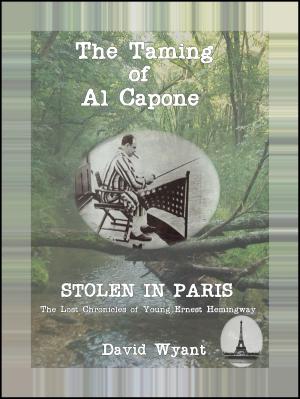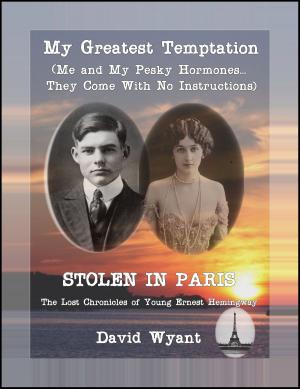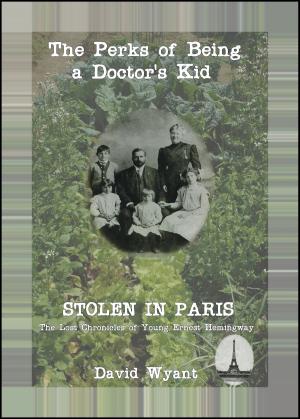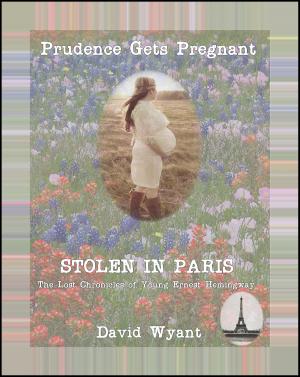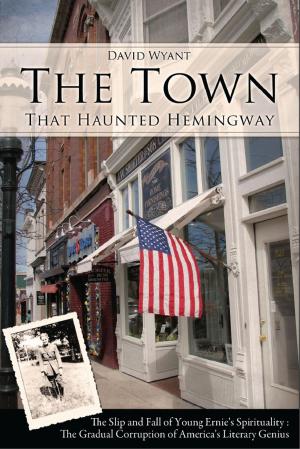Side Door to Heaven for Hemingway
Fiction & Literature, Drama, American, Nonfiction, Entertainment, Historical| Author: | David Wyant | ISBN: | 9781310069550 |
| Publisher: | David Wyant | Publication: | May 1, 2014 |
| Imprint: | Smashwords Edition | Language: | English |
| Author: | David Wyant |
| ISBN: | 9781310069550 |
| Publisher: | David Wyant |
| Publication: | May 1, 2014 |
| Imprint: | Smashwords Edition |
| Language: | English |
An historical fiction account for young adults which details the death and life of Ernest Hemingway. Opening upon the realization that he has died, and the mortician labeling his big toe with a tag, Ernie's after life experience takes him from his bereaved family, past the main pearly gates of heaven, and leads him into a profound dialogue as he comes face to face with his Maker. He then questions why he had come to choose the path of taking his own life.
Suicide keeps our protagonist out of heaven, but true to form, Ernie, thinking he still wears a press-pass, tries to find a loophole by which he can somehow wrangle his way into Paradise. Never on the outskirts of anything, he plots a strategy with Prudence, his old Native American girlfriend, who also commited suicide, who invites him into her purgative hot tub. As the two heaven rejects try to purge their sins away during a good hot soak, Ernie takes us on a flashback to his most idyllic summer up in Michigan.
This period, (1917-just after high school graduation and three months before his first real writing job in Kansas City) brings us young Hemingway's descriptions and dialog that are unforgettable, yet this period also reveals early glimpses of suicidal tendencies and their surprising cause.This is the last summer between his teenage years and his first “real” adult job. The instances and occurrences of this summer, that he later alludes to in his many letters among friends and family, twist his mind in a way that will haunt him all his life, leading to his eventual suicide at the age of sixty one years old.
Young Ernie is walking a tightrope of split loyalties between the starched, high collar, upperclass, Victorian America, and barefoot, wilderness survival taught by the Natives in the woods of Upper Michigan. While he is totally absorbed into the tribal ways of trapping, hunting, and fishing, he still must live in the white man's world where lumber barons are bent on clear-cutting every sacred, century old Council Tree.
Ernie's nemesis is his very own overly religious, yet hypocritical Mother, who nags him incessantly about getting a job – any job, as long as it isn't writing, his chosen profession. Amidst her preaching, his Mother lives a life which is so vile, that his fixation upon it later leads him to to his own self inflicted demise. This is a novel of post-suicide regret, as the reasons for and the consequences thereafter are illuminated.
Side Door to Heaven is set in the virgin forests of wild Petoskey, Michigan, and is a 179,000 word work of historical fiction. It reads like a 1900s Huckleberry Finn, and Ernie pulls the reader through the action in his first person account. This book gives the background information and insights necessary to better enjoy Ernest Hemingway's classic literature.
After careful study of eye-witness biographies by his siblings Marceline, Madeline, and Leichester; together with well documented biographies by Constance Montgomery, Carlos Baker, and many others; and the stories of locals here in Petoskey, Michigan—including Ernest's nephew, grandson, and the neighbors out at Horton's Bay, I feel confident creating a fictional, early life update as true to life as possible.
Because yours truly also has had a death experience this unique and outstanding anti-suicide story has a ring of validity which will keep the reader spellbound due to its striking authenticity.
The Hemingway family has suffered more suicides than one could endure. This fact and the celebrity factor involved together with many recent suicides of returning servicemen will make “Side Door to Heaven for Hemingway” a must-read not only for young adults but also for concerned psychologists, therapists, counselors and the thousands of Hemingway fans everywhere.
An historical fiction account for young adults which details the death and life of Ernest Hemingway. Opening upon the realization that he has died, and the mortician labeling his big toe with a tag, Ernie's after life experience takes him from his bereaved family, past the main pearly gates of heaven, and leads him into a profound dialogue as he comes face to face with his Maker. He then questions why he had come to choose the path of taking his own life.
Suicide keeps our protagonist out of heaven, but true to form, Ernie, thinking he still wears a press-pass, tries to find a loophole by which he can somehow wrangle his way into Paradise. Never on the outskirts of anything, he plots a strategy with Prudence, his old Native American girlfriend, who also commited suicide, who invites him into her purgative hot tub. As the two heaven rejects try to purge their sins away during a good hot soak, Ernie takes us on a flashback to his most idyllic summer up in Michigan.
This period, (1917-just after high school graduation and three months before his first real writing job in Kansas City) brings us young Hemingway's descriptions and dialog that are unforgettable, yet this period also reveals early glimpses of suicidal tendencies and their surprising cause.This is the last summer between his teenage years and his first “real” adult job. The instances and occurrences of this summer, that he later alludes to in his many letters among friends and family, twist his mind in a way that will haunt him all his life, leading to his eventual suicide at the age of sixty one years old.
Young Ernie is walking a tightrope of split loyalties between the starched, high collar, upperclass, Victorian America, and barefoot, wilderness survival taught by the Natives in the woods of Upper Michigan. While he is totally absorbed into the tribal ways of trapping, hunting, and fishing, he still must live in the white man's world where lumber barons are bent on clear-cutting every sacred, century old Council Tree.
Ernie's nemesis is his very own overly religious, yet hypocritical Mother, who nags him incessantly about getting a job – any job, as long as it isn't writing, his chosen profession. Amidst her preaching, his Mother lives a life which is so vile, that his fixation upon it later leads him to to his own self inflicted demise. This is a novel of post-suicide regret, as the reasons for and the consequences thereafter are illuminated.
Side Door to Heaven is set in the virgin forests of wild Petoskey, Michigan, and is a 179,000 word work of historical fiction. It reads like a 1900s Huckleberry Finn, and Ernie pulls the reader through the action in his first person account. This book gives the background information and insights necessary to better enjoy Ernest Hemingway's classic literature.
After careful study of eye-witness biographies by his siblings Marceline, Madeline, and Leichester; together with well documented biographies by Constance Montgomery, Carlos Baker, and many others; and the stories of locals here in Petoskey, Michigan—including Ernest's nephew, grandson, and the neighbors out at Horton's Bay, I feel confident creating a fictional, early life update as true to life as possible.
Because yours truly also has had a death experience this unique and outstanding anti-suicide story has a ring of validity which will keep the reader spellbound due to its striking authenticity.
The Hemingway family has suffered more suicides than one could endure. This fact and the celebrity factor involved together with many recent suicides of returning servicemen will make “Side Door to Heaven for Hemingway” a must-read not only for young adults but also for concerned psychologists, therapists, counselors and the thousands of Hemingway fans everywhere.




